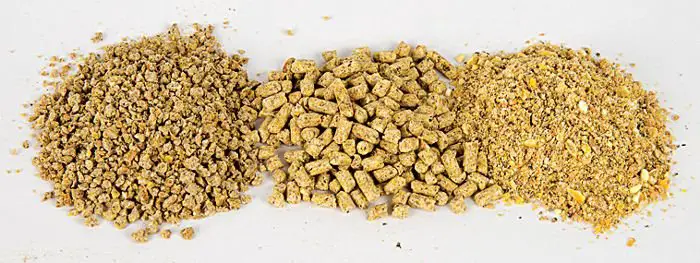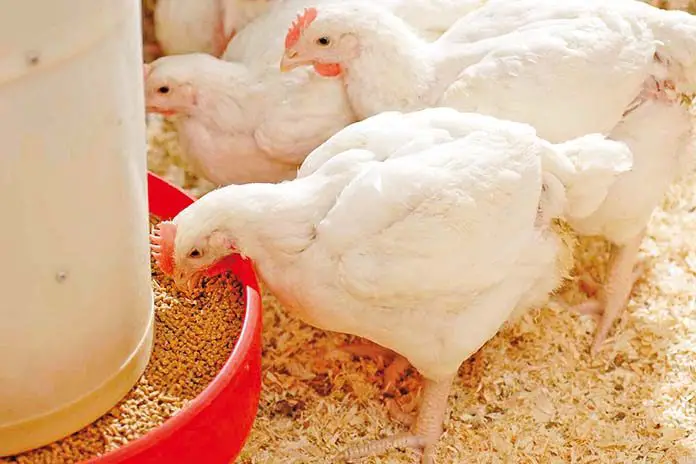Peanuts also known as groundnuts are a common legume grown mostly for its seeds which are covered in a hard shell. Close to 44 million tons of shelled peanuts are produced annually which means there are also a lot of peanut shells produced that can be fed to farm animals. Chickens can eat peanut shells; however, the shells have little to no nutrition to the birds comprising mostly of just fiber. Peanut shells are great for feeding to chickens as a snack and can help keep the flock busy improving fertility and reducing cannibalism. This is the case in layer and breeder chickens but unfortunately for broiler chickens, peanut shells are only good as a bedding material for the birds as they are very low in energy and protein.
Contents
Nutritional Profile of Peanut Shells
Peanut shells make up to 30% of the peanut fruit pod and are the outer covering that protects the seeds in the ground, hence are produced in large amounts where peanut processing occurs. The shells should not be confused with the peanut skins which come off the seed themselves. Groundnut shells or hulls are high in fiber, and low in protein and energy which makes them a poor feed for chickens. The crude fiber levels of peanut shells can be as high as 80%, which is very significant when feeding chickens as they have a limited ability to digest fiber. Crude protein levels in the shells are also a modest 7% but given the high fiber content is difficult for the chickens to utilize efficiently, energy is also low averaging 19Mj/Kg dry matter. Peanut shells are also low in macro minerals like phosphorus and sodium which are also required for the normal development of chickens. Feeding whole peanuts with shells included could be a bit more beneficial to chickens as the seeds are nutrient-rich compared to the shells alone.
How to Feed Peanut shells to Chickens
The best way to feed peanut shells to chickens is just to scatter them whole in the feeding space, the chickens will perk at them breaking them into smaller pieces before ingesting them. This activity keeps the birds busy and socializing which can improve mating and subsequently the fertility of the flock. The shells can also be ground up coarsely and added in small amounts to the complete feed, trying to formulate an inclusion to the final feed might not be feasible due to the low nutrient levels of the shells.
Benefits of Feeding Peanut Shells to Chickens
Peanut shells are rich in fiber which helps assist in normal gut function for the chickens if fed in moderate amounts. When whole peanut shells are fed to chickens, the increased feeding time and additional fiber can also reduce incidences of cannibalism in the flock. Any excess peanut shells that fall on the ground act as bedding for the chickens which helps improve the overall health of the flock.
Constraints of Feeding Peanut Shells to Chickens
Peanut shells are nutrient deficient, being mostly fiber at 80% crude fiber and if not washed can also contain a large quantity of inorganic material from the soil contamination. Fiber has a diluting effect on other nutrients and if fed in excess can have a negative effect on the performance of the chickens. For broilers, it is not recommended to feed peanut shells as this will dilute the diets leading to low weight gains. Peanut shells are incredibly light and bulky which means they are very costly to transport and hence can only be profitably used where they are produced and are difficult to incorporate into chicken diets. Chickens are very susceptible to mycotoxins and peanut shells pose a risk as they can contain large quantities of mycotoxins, especially moldy ones.
How Much Peanut Shells to Feed to Chickens
This is a challenging question to address as peanut shells are so poor in nutrients and high in fiber, that trying to incorporate them into a final balanced feed. The best recommendation would be just to feed them as a snack after feeding the full requirements of the chickens. This is most ideal for the layer or free-range chickens where they can moderate their consumption according to their nutrient requirements. For broiler chickens, I would not recommend feeding any peanut shells at all as this will have an adverse effect on their growth.
Can Chickens Eat Raw Peanuts?
Most legumes like soya beans, need to be heat processed and oil extracted before being fed to chickens, however, chickens can eat whole raw peanuts. Raw peanuts are energy and protein-rich, which makes them ideal for feeding to chickens where available. Broilers have been feed diets with up to 25% raw peanuts with improved growth performance compared to diets containing soya meal. This could be due to the high oil content which supplies energy for the growing and finishing broilers.
Can Chickens Eat Peanut Skins?
Peanut skins are the papery covering, covering the peanut seed, these should not be confused with peanut shells or hulls which are the hard outer covering of the peanut seeds. Studies have shown that peanut skins can be included in broiler chicken diets at levels up to 5% without affecting the growth performance of chickens. As with most peanut products and by-products, peanut skins are high in fiber and pose a mycotoxin challenge.
Conclusion
Chickens can eat peanut shells but only as a snack as peanut shells are very low in nutrients like protein and energy but very high in fiber. The high fiber content of the peanut shells has a diluting effect on other key nutrients which means that peanut shells should be fed in low amounts which do not affect the performance of the chickens. For slow growing chickens this can work well with any excess shells becoming bedding for the chickens, but for fast growing broiler chickens the feeding of peanut shells should be avoided. Moldy peanuts contain mycotoxins which are harmful to chickens and unfortunately these are what are mostly available for chicken feeding together with the shells.





